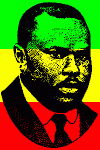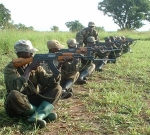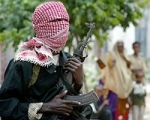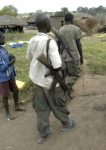(IRIN) - Thirteen-year-old Adong B fought for the rebel movement, the Lord's Resistance Army (LRA), for two years after being kidnapped in 2002 from her village in Koch Goma, in northern Uganda’s Gulu district.
In February, she was rescued by the Ugandan army and placed in a rehabilitation camp in Gulu town, 380 km north of the Ugandan capital, Kampala.
Speaking to IRIN on Monday in Gulu about her ordeal as a child soldier, she said: "Those who couldn’t carry on walking because of swollen feet were battered to death. I was forced to kill one girl who failed to walk."
Beatrice A, 14, was abducted in February 2004 and made to work as a porter for the rebels. "We walked for long hours, and when you failed to walk you were beaten," she told IRIN on Monday in Gulu. "Those who failed completely to walk were killed. Because of thirst, we sometimes had to drink our own urine to survive."
The use of child soldiers in northern Uganda's 19-year-old conflict has ripped apart countless families and destroyed innumerable childhoods. Relief agencies have testified to children being recruited both by the government and the LRA, as well as being civilian victims of violence.
However, the Ugandan government has vehemently denied the existence of child soldiers in its ranks, and insists that the Uganda People’s Defence Force (UPDF) has never knowingly recruited any children into its ranks.
"The UPDF does not have a policy of recruiting underage soldiers," Maj Shaban Bantariza, a UPDF spokesman, told IRIN. "We have never knowingly hired a child to serve in our ranks.
"We have had occasions when telling somebody’s age is difficult, and we have taken up recruits who are slightly underage," he admitted.
In such cases, Bantariza insisted, the UPDF had done everything in its power to prevent these children from entering the army.
"Last year we got 30 recruits who had been duly recommended by the community councils, but after scrutinising them [we found] they were underage, and their applications were turned down," he said.
NGO officials disagree. Father Carlos Soto, of the Justice and Peace Commission in the Gulu archdiocese, told IRIN that it was public knowledge in northern Uganda that the UPDF was using child soldiers to fight the LRA.
"The Acholi [ethnic group in northern Uganda] in the IDP [internally displaced persons] camps say these are destitute boys who have nothing to do – it is a way for them to have a job," said Soto, who has lived in the north for over 15 years.
Chulho Hyun, a spokesman for the UN Children’s Fund (UNICEF), told IRIN the organisation was concerned about the use of child soldiers in the country.
"Uganda is a signatory to international protocols and, therefore, efforts should be intensified to ensure there are no children in the armed forces," Hyun said.
"We are particularly worried about the recruitment of children into LDUs [local defence units], and are actively involved in discussions with the government about [the] prevention of child recruitment," he added.
In 2003, Human Rights Watch (HRW), a New York lobby group, found evidence of Ugandan children being recruited into LDUs, supposedly to provide security to local villages, but reportedly used to fight alongside the UPDF against the LRA.
A report in January 2004 by a London-based NGO, Coalition to Stop the Use of Child Soldiers, carried similar findings: "On a recent visit to Lugore training camp 120 children [were identified] among the recruits. Reliable sources also identified UPDF recruits among demobilised child soldiers in Yumbe."
The report added that international organisations had not been granted access to many military training camps where it was suspected that more children were held.
Hyun said, however, that the LRA was by far the worst offender when it came to the abuse of children.
Childhoods of abuse
According to the UN in 2004, more than 80 percent of LRA fighters were abducted children - the rebel group has kidnapped more than 20,000 children since 1988. This has left a gaping hole in the traditional family system of northern Ugandan society.
"Thousands of children have been raped, brutalised, drugged and forced to inflict unspeakable violence on others. The result: a generation whose childhood has forever been stolen from them," wrote Jan Egeland, UN under-secretary general for humanitarian affairs, in the foreword to the 2004 book published by IRIN: "When the Sun Sets, We Start to Worry: An Account of Life in Northern Uganda".
In a 2004 report, HRW said rebel commanders considered child soldiers "cheap, compliant and effective fighters".
Former child soldiers report that children are frequently killed or left for dead if they are either injured in battle, become too weak to keep up with the rebels or refuse to perform tasks allocated to them by LRA commanders.
Another survey in November 2004 by the UK-based scientific journal, the Lancet, found that more than half of 301 child soldiers surveyed – all of whom were abducted by the LRA, at an average age of 13 – had been seriously beaten.
Seventy-seven percent had witnessed another person being killed, 39 percent had killed another person and 39 percent had abducted other children. Sixty-five percent of the children had been forced into military training. More than a third of the girls had been raped, and 18 percent had given birth while in captivity.
Of the 71 children who agreed to complete a questionnaire to assess post-traumatic stress disorder, 69 had clinically significant symptoms, the Lancet reported.
"Since these former child soldiers are often blamed and stigmatised for the countless atrocities they committed – mostly against their own people – their psychological recovery and reintegration can be seriously complicated," the journal warned.
Relief workers in Uganda say children are most susceptible to abduction at night, when the rebels carry out their raids.
Each night, several thousand children, known as “night commuters”, leave their homes for the relative safety of larger towns such as Gulu. They sleep in hospitals or schools; failing that, they sleep rough on shop verandas.
Albert, a father of seven who lives on the outskirts of Gulu, takes care of a total of 18 children, all of whom join thousands more on the nightly trek to the heart of town for safety.
"I am always worrying about the children," he told IRIN. "They are too young to be on their own. There are also a lot of dangers at night. Some have been bitten by snakes, the older girls are disturbed by men and sometimes they are attacked by robbers."
The LRA, led by Joseph Kony, operates in northern Uganda, reportedly from bases in southern Sudan. In 1988, it began its campaign to remove the government of President Yoweri Museveni, ostensibly to replace it with one based on the Bible’s Ten Commandments.
Over the years, however, the rebel group has gained notoriety for its brutality, and it has regularly used torture, rape, mutilation and abduction as weapons of war.
Observers believe that the use of children by the LRA is a deliberate strategy - as the most vulnerable members of society they can be forced to become sex slaves, porters, domestic servants and soldiers.
Various NGOs have set up programmes to try and demobilise, rehabilitate and reintegrate former child soldiers, but the children are at times rejected by their communities as murderers. HRW reports that the children are frequently re-recruited by rebel forces.
Olara Otunnu, the UN’s Special Representative of the Secretary-General for Children and Armed Conflict, said in February that the international community needed to move its focus from developing standards on the protection of children to ensuring they were actually enforced on the ground. The tens of thousands of child soldiers in northern Uganda are just a fraction of the global total, which the Lancet puts at 300,000.
Resistance - Page 13
-
Uganda: Children suffering gross abuses in northern conflict
-
THE FATE OF BLACK ANARCHISM
In years past, when the slavery of the children of Africa was carried out by chain and whip instead of uniforms and patrol cars, black people in Brazil had only two places where they could be – in the Senzala or the Quilombo. The Senzala was a small hut placed outside the master's house, a shack in which the slaves would stay from after sunset to before sunrise, chained to the walls and behind locked doors. The Senzala was their home; there they raised their children and grew old. In secret, they practiced their language, religion and culture away from white eyes. The window of the senzala would always face the main quad of the plantation where a single post could be seen emerging from the earth's belly. The Pelourinho – the mast in which rebellious slaves where tortured into submission or death, whichever came first. This was the Senzala.
But, every once in a while, a laborious and dedicated group of slaves would defect from the generosity of the slave master's whips and chains and senzalas, and go into the jungle. They would run, day after night after day after night, into the mata, deeper into the forest; away from the treacherous Capitaes to Mato, the black or mulatos overseers responsible for capturing escaped slaves. In the jungle, they looked for hope. In the jungle, they looked for freedom. In the jungle, away from the white man, they looked for the Quilombo.
Quilombos were city-states created in the heart of the mata by escaped slaves. The most famous - the largest and the one whose name was whispered in secret in the dark by those in search of freedom - that was Palmares. Palmares had a estimated population of twenty to thirty thousand, structured in eleven different villages. In Palmares, as in other Quilombos escaped slaves held the majority. Natives and poor whites were also accepted into the Quilombo, with and shared the same rights and duties as anyone else. Decisions where made by village assemblies, in which every adult, man or woman, of every race, could (and most would) participate.
No, Palmares was no utopia. It was no communist society in which the decisions where as horizontal as possible and in which all were seen as equal. Palmares had chiefs, one for each village. The chief of the capital, Macacos, was the king of Palmares. But this is neither here nor now. The now is the quilombo as opposed to the senzala.
Palmares died in flames. It fought until the last person was dead. It had been fighting for its sovereignty and independence for over one hundred years. It gave its blood to defend what it cherished most – its freedom and its self-determination.
Whatever drove the Palmarinos to fight is what I am interested in talking about. A friend of mine said something that struck a cord in me. He said: “People are always talking about dying for this or that. You gotta die for the cause if you are militant enough, if you are really bad ass you should die for your beliefs. But nobody asks, what are you living for? Not dying, but living – what is your life for?”
The Palmarinos were living for something. They were living for their freedom and their collective autonomy. They were living for their right of self-determination, to do away with the chains that held them slaves in the past and to decide by themselves the path of their life. If they died fighting for that, they died for what they were living for. They died the death of free people.
We now call ourselves Anarchists. We say we want the end of all chains and the extermination of all oppression. Yet, in the Anarchist “movement”, black folk and other folks of color are still in the senzala. We are still having to disguise ourselves, call whitey “Massa” and chain ourselves to the wall. No, don't talk about racism unless is in that very abstract sense of “we-are-all-equal-let's-sing-kumbayas-and-pretend-the-color-of-our-skin-does-not-matter” racism. While there might be nobody yelling “die, nigger, die!*”, you can hear a very clear “shut the fuck up, nigger, just shut the fuck up.”
We pretend that racism is just a minor problem, something that, like the Leninist State, will wither away if we will it to. The intrinsic racist characteristics that infect Anarchism, specially North-American Anarchism, cannot be questioned without one being seen as some kind of authoritarian nationalist, or even worse, a Maoist. Red-baiting, of all things!
Like in the real senzala, our resistance to racism needs to be covert. It needs to be hidden and made like it is something else. It cannot be what it needs to be, it cannot do what needs to be done, or the senzala would break apart and the master's house would be set aflame. No. Like capoeira, our fight against white supremacy inside North American anarchism needs to disguise itself as a dance in order to become a martial art.
And you know how the rap goes: if we talk about empowerment we are power hungry. If we assert our self-determination, we are authoritarian nationalists. When we expose how white Anarchism is, elitist white Anarchists generally come with excuses like “Hey, I saw a black anarchist once!” or the classic, “well, we need to outreach to communities of color.”
Let me tell you something, the reason why the masses are not flooding to your Anarchism is exactly that one – it is your Anarchism. It is a white, petty-bourgeois Anarchism that cannot relate to the people. As a Black person, I am not interested in your Anarchism. I am not interested in individualistic, self-serving, selfish liberation for you and your white friends. What I care about is the liberation of my people. The collective liberation of the children of the African Diaspora, those that have been beaten down and treated worse than dogs all across the world.
So, no, we are not interested in your anarchism. We need to create our own. Understand this, if the whites in Palmares were allies and died with the blacks and the natives it is not because they invited the blacks and the natives into their structure, into their society and said unto them: “We are all equal.” It was because the blacks and the natives created their own structure - their own society - in which power relations were different so that whites could not longer by the sheer force of their privilege impose their view of how the society should be run. To try and integrate people of color in your society or your movement, like there would be no culture clash and no confrontation – it is naive, senseless and can lead nowhere but into deception.
In the senzala of contemporary Anarchist theory and practice, the only place for Blacks and other folks of color is the chain in the wall or the Pelourinho. To question the structure of this “movement”, why is it really composed mainly of white suburban boys, is a invitation to the Pelourinho - or to the Quilombo.
Some escaped slaves decided to create their own Quilombo in the forest of North America, and they called it A.P.O.C. - Anarchist People Of Color. APOC was a necessary step on the beginning of the self-determination of people of color inside the movement. This self-determination we seek is to analyze the problems of race inside and outside the movement in our own perspective. To create our own analysis of authority and what it means for us to be Anarchists. What does it mean for those that have always felt odd at an Anarchist event while looking around and thinking are they made the wrong turn somewhere and ended up in a white only area of segregated Mississippi.
When an anarchist tells me about how the cops are fascist pigs, I stop for a second and think. A lot of times I'll of some experience in a protest against this or that corporate meeting or something, in which the cops tear gassed the crowd and whoop some ass and I think, man, you got it easy. I remember in my neighborhood in Brazil, where if you got only an ass-whooping, you would considered yourself lucky. I remember the day they shot my uncle dead. I remember this one cop that used to follow me around and scare the life out of me because I thought he was going to cap me and there no way in hell I was approaching no authorities to complain because then I would surely wind up dead. I remember the police invading my grandma's house, guns in hand, while my cousin was still a baby and was sleeping in my aunt's bed. Even here, in my neighborhood in East Palo Alto, you can always hear the cops fussing around at night and you know they are not looking for no black-bloc kid from some protest or another. So tell me again how the cops are fascists...
The fact is, we know oppression. We live it, we experience it. In one form or another, one extreme or another. We do not conceptualize it. We do not sit down and intellectualize about pain because our people have been hunted down and shot, and burned and beaten and we lost the need to understand pain philosophically when we learned it physically.
So why are the people not filling the ranks of the Anarchist movement? What it is that prevents those people of color that have been feeling the brunt of police brutality, and have been living off the scraps of what capitalism leaves behind, why have they not joined the movement?
The answer is simple: because is not their movement. It can never be their movement while it is being created by and for white middle-class kids with a Jesus complex who think they can save the world (or the ones with Buddha complex who think they can get wet by talking about water). You cannot hustle the movement and you cannot hustle the people. Revolution is not a game in which you can pretend to listen to the voice of the people of color only when is convenient and shut them off when they start questioning your privilege.
APOC, as any revolutionary step, spurned an immediate reaction, a counter-revolutionary step. The amount of voices in the Anarchist “movement” that have been raised to criticize, put down or, in any other form, discredit APOC (most, if not all of them, white, by the way) have been, if small, consistent and bold. To incur and cite these criticisms is irrelevant to today's discussion. I am not here to defend APOC. I am here to talk about why I don't need to do it.
APOC is our Quilombo. Our keep, our fortress, where we can meet as people from oppressed background and not only share our experiences and how they are relevant to each other, but also how they are relevant in the larger scheme of things. APOC is more than a safe zone for people to feel good about not being in a room without white folk, but is a conscious project of self-determination for people of color. It is a step closer to our freedom as a people and the materialization of the idea that community comes from something in common, something we can share.
No, APOC is no utopia. It is not even close. But that is neither here nor now. We may stumble, we may fall, we may even break our heads wide open. But at least we are walking on our own two feet.
It is pointless for me to try and convince white Anarchists of the need for APOC because white anarchists have not experienced what we a people of color have experienced. It is like trying to convince my boss of the need for Socialism – a more often then not fruitless endeavor.
And while there are white Anarchists out there who remember that only the oppressed can liberate themselves and the end of white supremacy cannot be brought about by white people – there are those that, in their arrogance and shortsightedness, will not yield and cannot tolerate the thought that maybe there is something that Anarchist people of color need to discuss that does not include white people.
And if, for a moment, I thought that APOC needed to be approved by the white anarchist scene that would be the moment in which APOC would lose its appeal to me. Because is not about being accepted, being cherished, being “on the good side” with the white Anarchists – that is the Senzala. It is about self-determination and it is about resistance. It is about creating our own culture, our own analysis and dictating our own future. APOC for me is not about seeking a way to make white people love us, or hate us.
I have to tell you a secret about APOC: it is not about white people at all. It is not, and it should not be ever. I am tired of talking about white people, thinking of white people, analyzing white people and worrying about white people. I want to know what I have in common with my Korean sister and my Guatemalan brother. I want to know about the great struggles for liberation in Uganda and how the Filipino resisted imperalism. What can we learn from each other as people of color? What does my bairro in Rio de Janeiro has in common with a Latino barrio in East Side San Jose?
This is something I wrote for my sisters and brothers at APOC. We need to understand ourselves in order to understand the world around us and be able to fight and destroy the bourgeois plague which eating away our homes, our lives and our cultures.
As a black person, my anarchism is Black Anarchism. As a member of the exploited class, my anarchism is Class-Struggle Anarchism. As a person who wishes for a better future, my anarchism is Anarchist-Communism.
Vamos a ela, porque temos muito, muito para construir.
Não tá morto que peleia!
Viva a Anarquia!
-- Pedro Ribeiro (Furious Five Revolutionary Collective)
San Jose, CA
-
Weapons from uganda are causing a genocide in Congo DRC
DRC: UN seizes weapons in Ituri
18 Mar 2005 15:56:09 GMT
Source: IRIN
KINSHASA, 18 March (IRIN) - Peacekeepers in the Democratic Republic of Congo (DRC) seized guns and ammunitions on Wednesday in the embattled northeastern district of Ituri, the UN Mission there, known as MONUC, said.
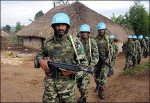
UN troops discovered the guns during an ongoing operation "cordon and search" in the territory of Zumbe, near Bunia - the district capital - MONUC said on Thursday.
Elements of the rebel Front nationale de integrationiste (FNI) were suspected of being based in the territory.
The UN operations are aimed at "neutralising militiamen, reducing their capacity for nuisance, forcing them into flight or retreat and cutting off their sources of illegal revenues," MONUC said.
Approximately 500 MONUC troops took part in the operation. They included Bangladeshi, Pakistani, South African, Moroccan and Nepalese contingents.
Recently, MONUC carried out operations in Loga, northeast of Bunia, during which they killed 60 FNI militiamen.
Guns and ammunitions are entering through Ituri to the eastern province of South Kivu from across the border with Uganda, Gen Patrick Cammaert, the acting commander of MONUC forces, said at a news conference on Wednesday in the capital, Kinshasa
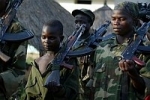
"We can see the flow of arms coming from Uganda, crossing Lake Albert, but we don't know yet who is behind it," Cammaert said. "We want to assure you that you will, when the time comes, see how we are going to conduct the operations on the lake."
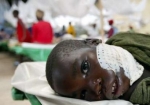

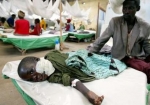
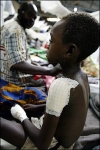
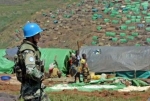
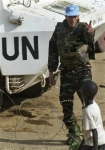
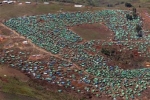
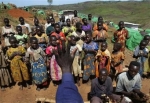


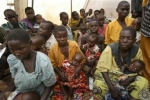
-
Congo crisis worse than Darfur
People's Media:
Uganda regime continues to bakroll and train murderrers and rapists "militias" in congo
Eastern Congo is suffering the world's worst current humanitarian crisis, with a death toll outstripping that in Sudan's strife-torn Darfur region, a top United Nations official said on Wednesday.
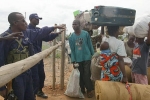
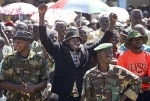
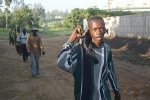
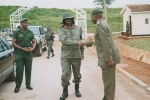
An elite within the ugandan government continue to pull strings behind the scenes. Logistics and a kangaroo tax systems continue to be managed by the notorius Presidential Protection Brigade. Money from the kangaroo taxation system has benefited NRM-O campaign programs.
UN emergency relief coordinator Jan Egeland said that over the last six years the toll in the Democratic Republic of Congo amounted to "one tsunami every six months" -- a reference to the December disaster which left about 300,000 people dead or missing in Asia.
"In terms of the human lives lost ... this is the greatest humanitarian crisis in the world today and it is beyond belief that the world is not paying more attention," he told a news conference.
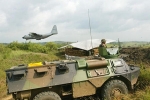
Egeland was speaking during a visit to Geneva for talks with UN and other relief workers on improving the global humanitarian aid system can be improved.
On Tuesday he came under fire from the Sudanese government over estimates transmitted through his spokesman that up to 180,000 people may have died from hunger and disease in Darfur, western Sudan, over the past 19 months of fighting.
At his Geneva news conference, he insisted the figure was a reasonable assumption -- given that an average of 10,000 civilians had been dying each month since the start of the conflict between local rebel groups and government forces backed by militias.
But the rate was declining now that the Sudanese authorities had allowed foreign aid teams into the country to help about 1.8 million people driven from their homes and largely living in refugee camps, Egeland said.

He spoke before a UN envoy in Khartoum said all international staff in part of Western Sudan were being pulled back to the local state capital because of threats from the pro-government Janjaweed militia.
Asked if too much emphasis was being put on Darfur by the international community, and especially big Western powers, Egeland said: "The amount of focus on Darfur is correct, but there is too little on (eastern) Congo."
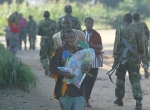
Egeland, fresh from a tour of the region, said he had impressed on the Sudanese government and rebels that they had to negotiate seriously for peace.
He had also expressed indignation to the government in Khartoum that some women raped by Janjaweed fighters and now pregnant were being persecuted for violating Islamic sharia law against sexual relations outside marriage.
"That is the ultimate insult for women who have been raped," he declared.
Egeland said the problems in eastern Congo arose because of the complexity and variety of the fighting groups there, which included regular soldiers, militias and criminal groups.
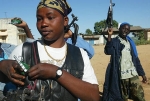
Among the fighters in eastern Congo are ethnic Hutus who fled Rwanda after the 1994 genocide there -- many of them accused of involvement in the violence in which an estimated 800,000 Tutsis and moderate Hutus were killed.
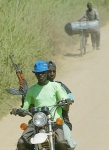
The United Nations has mounted a major relief operation in the region, where Egeland said some 3 million civilians buffeted by the conflict are in need of help to survive, and this week gave militia fighters two weeks to disarm.
—Reuters
-
Congo war is world's top 'forgotten' crisis
By Ruth Gidley
London - Brutal conflicts in Congo, Uganda and Sudan are the world's three biggest "forgotten emergencies", each dwarfing the toll of the Asian tsunami but attracting scant media interest, a Reuters poll of experts showed on Thursday.

War in Democratic Republic of Congo has claimed at least 10 times as many lives as the December tsunami yet remains almost unheard of outside of Africa, key players in the aid world said.
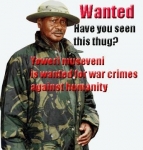
"It's the worst humanitarian tragedy since the Holocaust," said John O'Shea, chief executive of Irish relief agency GOAL. "The greatest example on the planet of man's inhumanity to man."
'The greatest example on the planet of man's inhumanity to man'
Reuters AlertNet, a humanitarian news website run by Reuters Foundation, asked more than 100 humanitarian professionals, media personalities, academics and activists which "forgotten" crises the media should focus on in 2005.
After Congo, they chose northern Uganda, west and south Sudan, West Africa, Colombia, Chechnya, Nepal and Haiti as the most neglected humanitarian hotspots.

They also highlighted the global AIDS pandemic and other infectious diseases such as malaria and tuberculosis as "silent tsunamis" that kill millions every year.
"Africa experiences the devastating effect of two tsunamis every month," said Amy Slorach, appeal coordinator for British relief organisation Tearfund.
Many experts accused the Western media of routinely ignoring emergencies in countries of little geopolitical significance for big powers despite the enormous scale of suffering.
"One television news producer we met in the US summed up the situation since spring 2003 this way: 'Look, we've got three foreign news priorities these days: Iraq, Iraq, Iraq,'" said Gareth Evans, head of the International Crisis Group think tank.
"And Iraq is not simply an American obsession. We've heard a similar refrain from news producers and newspaper editors again and again throughout Europe and elsewhere."
Almost half of those polled - including UN relief coordinator Jan Egeland and US leftwing intellectual Noam Chomsky - nominated Congo, citing the brutality of an ugly, tangled war that has killed nearly four million people since 1998.
Congo's war officially ended in 2003 but fighting still rages in parts of the east and the United Nations estimates that 3 million people are cut off from desperately needed aid.
"The human suffering is mind-boggling," said Lindsey Hilsum, international editor for Britain's Channel 4 News. "The wickedness and cruelty of the armed men who kill and maim and rape defies belief."
The details of northern Uganda's 18-year war, ranked second in the AlertNet poll, are just as shocking.
More than 20 000 children have been abducted by a cult-like rebel group and forced to serve as soldiers and sex slaves, while most of the population in the conflict zone have been forced from their homes into squalid camps, say aid agencies.
"Like many people, I didn't have any idea of the scale of this conflict," said British Hollywod star Helen Mirren, who traveled to Uganda with relief agency Oxfam.
"Nearly two million people have been made homeless and hundreds of thousands more have been killed."
The experts' third most neglected emergency was Sudan, where Africa's longest-running civil war has raged for two decades in the south and almost two years of atrocities in the western Darfur region have raised the spectre of genocide.
"Darfur has slipped from the front pages, but the situation there is again going from terrible to being absolutely horrendous," UN relief coordinator Jan Egeland said.
The poll also highlighted misery in West Africa after bloodletting in Liberia, Ivory Coast and Sierra Leone, along with suffering in conflict-riven Chechnya, Nepal and Haiti.
Experts urged the media not to ignore the impact of the HIV and Aids pandemic sweeping sub-Saharan Africa and threatening to explode in India and China, the world's most populous countries.
They also drew attention to lesser-known Aids threats in Eastern Europe, the Caribbean and Papua New Guinea, along with other infectious diseases. Malaria kills an African child every 30 seconds, while tuberculosis kills about 2 million a year worldwide. -
THE FORGOTTEN GIANT OF BLACK LIBERATION
By Paul Hill, Jr.
Where have we as Africans born on the Western Hemisphere gone astray? And who should be remembered and considered as a point of reference and model for Black and Non-Black members of the planetary underclass?
What is our condition? Thirteen decades have passed since emancipation, and half the Black Men between twenty-four and thirty-five are without full-time employment. One Black Man graduates from college for every one hundred who go to jail. Almost half of Black children live in poverty. With such conditions the movement has degenerated to a series of endless non-strategic marches and intellectual meandering by dream teams and HNIC’S.
What lessons and examples of leadership and movements of the past have we forgotten and not built upon?
Marcus Garvey and the Black liberation movement he founded are largely forgotten today. But Garvey and his movement constitute one of the most important, innovative, and original of all contributions to the struggle for Black and African liberation. Moreover, in the current period of decline in the world economic culture, with its inevitable concomitant revival of issues of class and race, Garvey and his movement can provide powerful inspiration and lessons for both Black and Non-Black members of the planetary under and working classes.
Marcus Garvey was born in 1887 in Jamaica. He worked as a laborer organizer in various Caribbean countries but initially found only limited success in organizing the Black working class. Visiting Britain in 1912, Garvey came in contact there with Black African intellectuals. He thereupon developed a powerful and unique model of Pan-Negro liberation on the basis of Africa as the Israel of Black people. Garvey’s model 1) viewed Black people as a single worldwide community, whose original home had been in Africa; and 2) called for total de-colonization of Africa, its unification as a single state, and its recognition as spiritual center and planetary home for Black people wherever they might be on the planet. Just as Jews who at that time had no homeland must free Palestine to find their own place in the world, Garvey argued that Blacks must free Africa to find their freedom in the world. Having been dispersed by European colonialism and slavery into a ‘Black Diaspora’, Black people must return spiritually - and in many cases physically - to their life in Africa. In Garvey’s vision, Africa was to have the same centrality, with the same religious theme of exile into slavery and return, that Israel has for the Jews.
Organizing U.N.I.A.
Upon returning to Kingston, Jamaica Garvey was fired with this vision of universal, ‘African-centered’, Negro liberation. He began working with friends to enact the vision by developing U.N.I.A. - The Universal Negro Improvement Association. The first chapters of U.N.I.A. were established in Jamaica and other Caribbean countries in 1914. But while visiting the U.S. in 1916 Garvey began to build chapters of U.N.I.A. there and gradually found that his vision struck a deep positive resonance among US Black people. The center of the movement - and Garvey himself - shortly gravitated to the US From there the movement developed rapidly and on a virtually planetary scale, with several thousand chapters being established in the US, Europe, the Caribbean, Africa, and elsewhere.
Black people in the US were particularly responsive to Garvey’s vision. They resonated to his internationalist theme - the theme that all Black people were members of one mighty international race stretching form the Black urban ghettos and sharecroppers shacks of America to the sugar workers of the Caribbean and the tribes people of Africa; they related to his view that all Black oppression flowed from common sources in the European conquest and colonization of Africa and the forcible dispersal and murder of millions of Black Africans by European enslavement; they rallied to his practical program for immediate steps linking the liberation of Black Americans with the liberation of Africa; and they found new dignity and understanding of their place in the world through his conception of Africa as the natural spiritual center and home of Black people.
A New World For Black People
U.N.I.A. was for a time extremely successful in organizing itself as a new cultural, economic, social, and political world for Black people. Many U.N.I.A. chapters, at least in the US, were massive in character, with total movement membership peaking in the early 1920's at several hundred thousand. In many US cities ‘Liberty Halls’, as the movement’s central headquarters were called, sprang up. Within its chapters U.N.I.A. successfully organized: a) Black women’s organization, b) musical groups, c) religious organizations including ‘the African Orthodox Church’, d) an internationally distributed newspaper ‘The Negro World’, 3) the ‘Black Cross’ Nurses, and other specialized divisions as well. Photographs from the period show such sights as Garvey paramilitary troops parading through the neighborhood; brigades of ‘Black Cross Nurses’ passing in review; as well as large conclaves and gatherings at the Harlem Hall. U.N.I.A. members also successfully developed their own Black economic co-operatives in various American cities and southern rural communities, and they began the collection of funds for purchase of passenger ships for ‘the Black Star Lines’, a shipping company whose mandate was to take Black people who desired repatriation back to Africa. Meanwhile, U.N.I.A. laborer organizers in the Caribbean successfully organized a number of unions in sectors of the work force consisting largely of Black people. Moreover, in an era when male dominance was almost universal in mixed gender organizations whether Black or otherwise, women - including Garvey’s own wife - were unusually prominent in the U.N.I.A. movement and occupied a number of important positions. The ‘women’s page’ of the U.N.I.A. Paper, edited by Garvey’s wife Amy Jacques Garvey, spurned news of cocktail parties and bridge games, then standard on women’s pages. It favored instead articles on such topics as African and Asian women liberating themselves from male bondage; articles encouraging women to fully develop their individuality; articles extolling women as harder workers then men; and articles criticizing Black men for not working hard enough to provide security for their families.
Combining Political and Cultural Liberation
Garvey’s movement appealed strongly to ordinary Black people. It appealed, that is, to the ‘field Negro’s’ - to the residents of the northern US ghettos, and to the southern class of poor Black farmers and workers. It likewise appealed to the oppressed and impoverished Black people of the third world. Its appeal was less effective with the ‘house Negro’s’ of the Black educated classes. This stratum was generally more attracted to the work of the National Association for the Advancement of Colored People, and the work of activists such as Dr. W.E.B. Dubois.
One of Garveyism’s greatest appeals to ordinary Black people, an appeal which Black liberation groups of the 1960's were unable to duplicate, lay in fully combining within one organization ‘Black liberation groups of the 1960's were unable to duplicate, lay in fully combining within one organization ‘Black political liberation’ (liberation concerned with institutional change and the struggle for Black social, political, and in the case of Africa anti-imperialist liberation) with "Black cultural liberation’ (liberation concerned with Black identity, Black personal life, and Black contributions in the arts). The educated Negroes of the 1960's were unable to duplicate, lay in fully combining within one organization ‘Black political liberation’ (liberation concerned with institutional change and the struggle for Black social, political, and in the case of Africa anti-imperialist liberation) with ‘Black cultural liberation’ (liberation concerned with Black identity, Black personal life, and Black contributions in the arts). The ‘educated Negro organizations’ tended to spurn the new popular Black cultural forms such as jazz as marks of ignorance. But Garvey’s organization embraced those very forms - jazz was frequently played at U.N.I.A. meetings - as a means of building the new positive Black identity. Moreover, the central "Liberty Hall’ of the movement, located in the Black Neighborhood of Harlem, was closely tied to jazz.
Global Scope of U.N.I.A.
U.N.I.A. - The Universal Negro Improvement Association - was expanding not only in the US but around the world from 1916 through 1923. By 1920 the movement felt strong enough to convene a world convention representing Black people. In the words of one of Garvey’s biographers, Theodore G. Vincent, "Never before and never since has there been an assembly of Black people to match the convention of 1920." The convention was a truly planetary affair, with representation of the Black masses from around the world. It took place in New York City with approximately 2,000 delegates and other members from U.N.I.A. Chapters in 25 countries on four continents. The convention drew up and passed a charter declaring that Africa must be granted freedom as a unified independent state, and establishing a pro-tem ‘African government’ to which all Black people, where ever they might be, were to be loyal. Precepts of the charter included the demand for an end to all forced segregation or discrimination against Black people in housing, employment, and access to public facilities; an end to European colonialism in Africa; and the stipulation that no Black person should be inducted for military service or war by any nation and - in any case - was not obliged to serve, without the consent and approval of the Black world government. Chosen as titular head of the new Black world government as the mayor of Monrovia, one of the delegates to the convention. The choice was significant, as Monrovia was the capital of Liberia, which was then one of only two independent Black African states. Finally, the convention chose Garvey as president of the new pro-tem Black world state.
Stressing Self-Reliance
Garveyism stressed economic and cultural self-reliance of Black people, and the importance of separating themselves intellectually, spiritually, and socially from the White European society that oppressed them. Garvey taught that Blacks should, for example, develop their own literature while taking the best from white literature. He stressed, however, that Black people must read white literature critically, with careful attention to preventing racist denigration of Black people from entering their minds subconsciously. At the same Garvey was fundamentally non-racist, stating that all races should live in equality, peace, and harmony, although he at times strayed over the line to anti-Semitism in some of his writings of the early 1930's.
As a supreme protagonist of Black people, Garvey was not afraid to bluntly criticize his people for their faults. He stressed that the White race had risen to dominance partly through self-discipline and hard work and that in order to win their freedom - Black people must do the same. One unifying thread of his approach was the constant thrust towards full human dignity for all Black people.
Decline of U.N.I.A.
From 1923 or 1924 onwards Garveyism went into decline. This decline was partly due to internal contradictions, faction fights, and personality conflicts within the organization; partly to a reversal of policy by the African country of Liberia which had tentatively agreed to accept Blacks who wanted to resettle in Africa but then reversed itself; and partly due to persecution by the US government and by other governments of the movement.
Garvey himself was imprisoned in 1923 by the US Government for alleged fraud in connection with supposed misappropriation of funds related to the Black Star Lines. The evidence against him was of dubious character, however, and he was pardoned by the president of the United States in 1927, before the completion of his jail term. This pardon is thought to have eventuated from pressure brought to bear within the government by Black federal civil servants. Upon his release, Garvey was immediately deported to Jamaica. He was never allowed to set foot in the US again. This enforced absence accounts in part of the decline of the movement.
Enduring Influence of Garvey and U.N.I.A.
By the mid 1930's, at the latest, Garveyism had disappeared as an effective organized force. But it remains to this day the largest organized mass-based movement of Black people - and by far the most internationalist one - to ever be established in the US Moreover, its influence is still felt in a number of areas. Elijah Mohammed’s Nation of Islam - popularly known as ‘the Black Muslims - and a number of other Black nationalist organizations which began during the 1930's were, to a great extent, ‘Neo-Garveyist’ movements. These movements attracted many thousands of former Garvey members, although they generally offered far less cultural and political breadth and less humanist universality than the original Garveyist movement. In addition, Garvey’s writings are known to have influenced a number of significant leaders of the African independence movement. Kenya’s revolutionary leader and first president, Jomo Kenyata, considered himself a member of U.N.I.A. Kenyan laborer leader Tom Mboya" ...followed very closely the writings and speeches of Marcus Garvey." Ghana’s independence leader and first national leader Kwame Nkrumah said: "I think that of all the literature I studied, the book that did more than any other to fire my enthusiasm was the philosophy of Marcus Garvey published by his wife".
Among other African leaders who admired and considered themselves indebted to Marcus Garvey were Dr. Nnamdi Azikiwe, the first president of Nigeria; President Kenneth Kaunda of Zambia; and Felix Eboue from the Central African Republic. Moreover, the Jamaican Rasa-Fabians owe their origins to Garvey, who prophesied in Jamaica that ‘a Black king shall arise in Africa’. This king was thought - by those who became ‘Rasa’), and this together with Garvey’s heady mixture of Africa-as-Black-Israel led to the formation of Rasa Farianism. Finally, no less a figure than Malcolm X credited Garvey as a signal source for Black liberation, stating that "Every time you see another nation on the African continent become independent, you know that Marcus Garvey is alive!...All the freedom movements that are taking place right here in America today were initiated by the work and teachings of Marcus Garvey."
The Legacy of U.N.I.A. and Garvey
Garvey’s movement was the largest mass-movement of Black people ever assembled in the United States. This movement was ahead of all Black organizations of its day - and of ours - in the all-sided totality of cultural, political, economic, and spiritual liberation for Black people to which it aspired, and at least within its own ranks began to achieve. So great was this totality that Garveyism has been described a ‘a Black civic religion’. In addition, one of the movement’s greatest strengths was internationalism. The Garveyite movement saw that black people - like the Jews - constituted a single planetary people who had been forcibly removed from their homeland, sold into slavery, and scattered into a ‘Black Diaspora’.
In the present period of economic cultural decline, the cultural totality and planetary scope of the Garveyist movement is a model worth remembering for both Black and Non-Black members of the planetary underclass.
One hundred and fifteen years ago God, as it were, sent his begotten son, Marcus
Mosiah Garvey, to redeem his people by showing them the only way towards salvation. For reasons unknown only to the Almighty, the littlle town of St. Ann's bay, situated on the north coast of Jamaica, was chosen as the birthplace of this great prophet, teacher and leader. The date of this modern miracle was August 17th, 1887. Garvey was a man who, in retrospect, was far ahead of his time. This is clearly proven by the fact that his ideologies have resurfaaced today and could be considered a major factor in the liberation of African peoples the world over. Garvey sought to revive the spirit of Black people from despair to hope; from lethargy to positive action; from fear to courage; from inertia to assertiveness; from anti-discrimination dodges to manly confrontation. He gave them goals possible to man, the highest creation of God, because he believed with all his heart in the innate abilities of the African race. On August 1, 1914, Garvey launched the Universal Negro Improvement Association and African Communities League (U.N.I.A & A.C.L) in Jamaica, an organization to advocate the unity and blending of all Negroes into one strong, healthy race.
After the first World War, there was a resurgence of the Ku Klux Klan influence in the United States - another decade of racial hatred and open lawlessness had set in, in which Negroes were again prominent among the victims. African people were by this time more than ready for a Moses, and only a Black Man could express the depth of their feelings. Marcus Garvey settled that question for thousands by forming the U.S. branch of the U.N.I.A. & A.C.L. in June 1917.
On June 10, 1940, at the age of 53, MARCUS MOSIAH GARVEY died in London of a severe stroke without having set foot in Africa, but his impact there was tremendous. He left a rich legacy of history for us to study and utilize in our continued quest for independence and liberation as a people.
Brief History of Some of The many Afrikan Heroes that Established the Path that Marcus Garvey Followed.
Prince Hall. Born in 1748, started the Afrikan Lodge in 1776. Fought against the Massachusetts slave trade.
Olaudah Equiano & Ottobah Cugoano. First Afrikans to write books in english in 1789 promoting emancipation of Afrikans.
Bookman Dutty. Originator of the Haitian Revolution, 1792.
Toussaint L'Ouverture and Henri Christophe were military leaders (generals) in Haitian revolution.
Jean-Jacques Dessalines. Declared Haiti free in 1804.
Gabriel Prosser. Organized rebellion of 40,000 slaves in Virginia in the 1800s.
Paul Cuffe. Formed Friendly Society for the Emigration of Free Afrikans in 1811 and transported Afrikans to Sierra Leone at own expense.
Chaka Zulu. Greatest Afrikan warrior, general, military genius. Started consolidation of Southern Afrika in 1812.
Richard Allen. Formed Afrikan Methodist Episcopal Church in 1816.
Absalom Jones. Founder of the Free Afrikans Society and The Sons of Afrikans Society.
John B. Russwurm. Founded and edited 1st black newspaper in US, The Freedom's Journal in 1826. Repatriated to Liberia in 1829.
David Walker. 1829 wrote book titled, Appeal to the "Coloured" Citizens of the World. Philosophical & spiritual father of all who followed the revolutionary path of radical resistance.
Samuel "Daddy" Sharpe. Leader of one of the greatest rebellions in Jamaica, the Baptist War in 1831-32 which contributed to emancipation. Executed in 1833 by british.
H.H. Garnett. Founder of African Civilization Society. 1843 convention called for slaves to revolt.
Frederick Douglas. Greatest spokes-person of his day for abolition of slavery. Autobiography written in 1845, A Narrative of the Life of Frederick Douglas: An American Slave.
Martin Delaney. Father of Black Nationalism, co-edited the North Star with Frederick Douglas and in 1859 lead an exploratory party of free Afrikans to Afrika. Made agreements with Nigerian kings for the resettlement of Afrikans.
Harriet Tubman. Born a slave to become leader of underground railroad in 1850s.
E. W. Blyden. 1832-1912; Returned to Afrika in 1851. President of Liberia College. Wrote in 1887, Islam, Christianity & the Negro Race.
JA JA. Merchant prince of Nigeria. Deported from Nigeria in 1860 by the british because he controlled the palm oil industry.
Paul Bogle. Leader of rebellion in Jamaica in 1865.
The Fanti Federation. 1865, Ghana. Wrote constitution and petitioned the british for the independence of the Gold Coast.
Sojourner Truth. Preacher, abolitionist and lecturer. Fought for better educational opportunities for Afrikans following american civil war until death in 1883.
Bishop Henry McNeal Turner. Greatest advocate of repatriation before Garvey. 1870.
Samory Toure. Brilliant military general who fought successfully against the french in Sudan for 18 years. Died in exile in 1900.
"The Mahidi", Mohammed Ahmed. Freed Sudan from the british before his death in 1885.
Hubert Harrison. Founder of the Liberty League and influential on Garvey's philosophy.
Dr Robert Love. Publisher of the Jamaica Advocate 1894-1905, militant journalist. Gave Garvey elocution lessons. Anti-colonial fighter. Promoted race-consciousness.
Prempeh. King of the Ashanti; exiled by british in 1896.
Queen Asantewa. Lead the Ya Asantewa War in 1900 against the british in Ghana.
Booker T. Washington. Founder of Tuskegee Institute. Wrote, Up From Slavery, published in 1901.
-
When Uganda Soldiers(UPDF) step foot in Somalia, shoot to kill
People's Media:
A UPDF battalion is training intensively for deployment in Somalia under an African Union peacekeeping force.
736 killers, rapists and thieves are to step foot in somalia soon. Somali Brothers and sisters, don't allow the criminals come near your daughters, sisters and mothers as they did in Congo DRC. Uganda Military machine is responsible for the death of 3.6 million africans in Congo DRC. Uganda as a state puts the white man's interest before the african's one.
Somali people should not let an un elected Somali government that claims to represent the people impose foreign armies on you or tell you how to run the Horn of Africa. Where were they during the darkest hour?
UPDF soldiers have killed thousands of moslems in Congo DRC,Sudan and uganda and 25% are HIV carriers. UPDF's presence in Somalia will be on behalf of their masters in washington.
Crimes UPDF commited on fellow africans while protecting american interests. Don't let this happen to you!
UPDF continues to terrorise ugandans in the name of "War on terror". Don't let murderers walk free on you streets!
UPDF is good at creating militia armies, "The Rhinos", armed by the Ugandan Army UPDF wander through the refugee village of Odek in northern Uganda. The soldiers are suppose to be protecting the people displaced from their homes by the ongoing war with the Lord's Resistance Army but often practice robbery, extortion and cattle rustling themselves.
Long Live the Somali People and their struggles!! -
Humanitarian Crisis in Congo DRC
By David Lewis
TCHE, Congo, March 6 (Reuters) - Sheltering in a sea of green plastic tents, thousands of civilians in this eastern Congolese valley say they are too terrified to return to what little may remain of their ransacked homes.
New families, displaced by fighting, are continuing to arrive at the camp in Tche, northeastern Congo, where insecurity has kept vital medical help away. Aid workers say more than 10 people may be dying each day.
"The mortality rate in the camps is alarming," said Modibo Traore, head of the U.N. Office for the Coordination of Humanitarian Affairs (OCHA) in the main town Bunia.
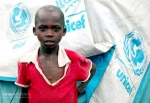
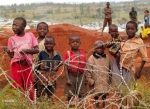
"Many of those now arriving in Tche do not have any means of collecting water or cooking food, and no possibility to reach medical assistance. The potential for a major epidemic in the Tche area is growing," he said.
Two months of clashes between Hema and Lendu militia have displaced 70,000 civilians in this remote part of Democratic Republic of Congo. Simmering ethnic warfare has killed 50,000 people in the region since 1999.
"The first attackers are those that carry the guns, then follow more men as well as the women and children with the machetes," said community leader Augustin Ngone, casting an eye over a valley that is now home to some 15,000 people.
"Children as young as eight are taking part. They just burn everything so we have to leave," he said.
U.N. helicopters occasionally buzz overhead, drowning out the sound of nervous chatter as they ferry in more peacekeepers to protect the refugee camp, one of several within a 50 km (31 miles) radius in Congo's Ituri district.
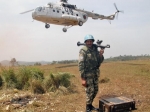
"We are just farmers but the FNI (a Lendu militia) came along and burned everything," said Robert Longa, a Hema who fled the nearby village of Kawa to hide in Tche.
"I don't know why they are doing this. The day I fled, I saw 30 people being shot. Without security here, we can't go back," he said, as around 100 Pakistani U.N. peacekeepers watched over the camp from tanks and machine gun positions.
KIDNAPPINGS
An upsurge in fighting in Ituri since December has damaged efforts by the former Belgian colony to recover from a wider 1998-2003 war that at one point sucked in six countries.
Warlords are still in charge in this region rich in gold, diamonds and timber. Their militia run extortion rackets and as well as attacking civilians. Gunmen last month shot dead nine Bangladeshi U.N. peacekeepers near Kakwa village.
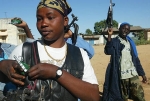
Peacekeepers say there have been frequent mass kidnappings of Hema by Lendu gunmen during the fighting.
"I was taken from Tche three weeks ago. One of the Lendus forced me to be their wife. I had to sleep with him whenever he wanted. But I managed to escape when we went to the market," said Demba Matuti, 18, who had walked all night to reach Tche.
"I'm glad to be here but I am scared they will attack us here as well," she said.
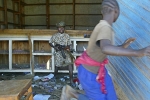
Aid agencies have set up similar camps for the displaced in the fishing villages that are dotted up and down the shores of Lake Albert, which separates Congo from neighbouring Uganda.
Aid workers are starting to return after staying away because of fighting. They say sanitation in the camps is deteriorating rapidly with many people suffering from diarrhoea.
"During the five days we did not come, there were 25 deaths. This is five times above the acceptable rate," said Patrick Barbier, head of the Medecins Sans Frontiers team running health facilities in the camp at Tche.
"If there is no permanent medical presence, these people just can't cope," he said. -
Congo refugees tell of militia atrocities
KYAKA, Uganda, Friday
Congolese doctor Anthony Ntakabuza fled his private medical clinic with his wife and children after gunmen padlocked his brother's mouth shut and then threatened to chop his own head off and put it on a stick.
After making a 150 km (90 mile) trek over towering mountains to reach a refugee camp in neighbouring Uganda, the 39-year-old was shocked when two of his pursuers followed him there.
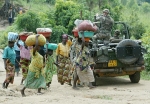
"They told me, 'If you hide underground, we will hunt you down. If you go to heaven, we will find you there.'
When I saw them here in Kyaka I thought this is really my death now," he said, eyes shifting uneasily over the nearby tents and huts.
Ntakabuza is among hundreds of thousands of people who have fled violence in eastern Democratic Republic of Congo (DRC) in recent years. Congo's war officially ended in 2003 but refugees continue to arrive in Uganda, desperately trying to escape persisting bloodshed.
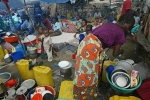
The men who forced him out of his home and practice in North Kivu province in eastern Congo in December were fighters from the feared Congolese Mai-Mai militia forces and Congo-based Rwandan rebels known as Interahamwe. Like many of the other irregular forces battling for control in the gold and diamond-rich region, the two groups are notorious for their brutality against unarmed civilians.
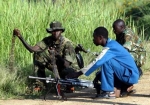
East Congo hit the headlines again when gunmen killed nine UN peacekeepers at Kakwa village in Ituri district (not part of North Kivu) on Feb. 25 and UN troops killed an estimated 50 militiamen at Loga village 40 km (25 miles) away on March 1.
The fighting could hurt efforts to end Congo's wider war, which at its height sucked in six countries and may have killed up to four million people, mainly through hunger and disease.Recent killings, particularly by militias from the Hema and Lendu ethnic groups in Ituri, are expected to force more refugees into Uganda. Aid workers say almost 5,000 new arrivals have been registered at Kyaka since December.
Patrick Ruweza fled Ituri's main town of Bunia after ethnic Lendu warriors hacked his parents and brother to death in front of him.The 18-year-old managed to escape and said he reached Uganda after crossing stormy Lake Albert in a flimsy canoe.
"Of course I was scared, but if you know there are people behind who want to kill you, you can overcome," he said.
Six years of conflict in Ituri has cost 50,000 lives and an estimated 70,000 people have been displaced this year alone. As in previous years, many brave cloud-wreathed mountain passes or a 30 km lake-crossing to the safety of rural western Uganda.
Some 11,000 refugees are hosted by Uganda's government and the U.N. refugee agency at Kyaka II settlement, where each family is given just over an acre to cultivate.
Many recent arrivals at Kyaka want to go home, but say they are scared. Most people said they had seen relatives tortured or raped, and many said their whole family had been killed.
"We have very many cases of rape, but sexual violence is not just rape. We have had some women recently whose private parts were so badly burned," said an official at a Kyaka clinic.
Many women have fled huge distances on foot, carrying several children, before reaching Uganda. Asina Ayoubo's husband was killed and her home burned to the ground by militiamen, but she was in the fields and got away with her six children.
Petrus Nabitanga said she walked to Uganda after her husband was massacred with 160 other refugees at Gatumba camp in Burundi last August. She said her nine children wake up screaming at night, traumatised after hearing their father die.
More than 100 civilians were killed and twice as many raped in December and January in fighting in the eastern Democratic Republic of Congo (DRC), UN investigators have said.
Mass killings, summary executions and systematic rape have been committed, often in all impunity, in the four parts of Nord-Kivu province — Rutshuru, Masisi, Walikale and Lubero — where the United Nations has carried out its investigation.
Regular Army troops, mutinous ex-soldiers and local militia fighters were all responsible for killings and atrocities in the area, the team of human rights investigators from the post-war UN mission in DRC (MONUC) has found.
In December, regular Army soldiers clashed in the area with mutinous troops — former members of the Rwandan-backed ANC rebel movement who were taken into the armed forces following the DRC's 1998-2003 war.
Fighting has simmered on in the region, and there have been widespread reports of atrocities committed against the civilian population.
"The security situation is worrying in Rutshuru, with an increase in the number of armed attacks and looting," the UN team coordinator Sonia Bakar said.
She said the crimes were committed not only by the Interahamwe, a Rwandan Hutu militia, and by the Mai-Mai, a pro-government militia, but also by the mutineers.
Bakar told reporters that the mutineers had been using "rape as a means of terrorising the population." They also carried out mass killings in Buramba, in the Rutshuru area, where UN observers confirmed at least 30 civilian deaths.
—Reuters



